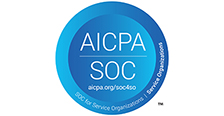
-
January 1, 1900
Apportionment of Fault to Public Entities = Fairness for Joint Defendants
by Cherylee O. Melcher
Under the Tort Claims Act (TCA), a public entity or a public employee cannot be held liable for personal injury damages unless the plaintiff sustained a permanent injury as defined by the TCA. According to the TCA, damages will only be awarded against a public entity if the plaintiff can prove that he or she sustained a permanent loss of bodily function or permanent disfigurement that is substantial and incurred medical expenses of at least $3,600. On the other hand, unlike a public entity, a private individual is subject to liability without having the plaintiff meet such a threshold and demonstrate the severity of his or her injuries. With these different standards in place for a public entity and a private individual, one must ask what the impact is when a plaintiff’s injuries are caused jointly by a public entity and a private individual.
Competing Standards Effecting Liability
Recently, the Appellate Division addressed this issue in Bolz v. Bolz, as it focused on the interplay of the TCA, the Joint Tortfeasors Contribution Law (JTCL), and the Comparative Negligence Act (CNA) when a plaintiff sustains injuries in an automobile collision between a private automobile and an automobile owned by a public entity and driven by a public employee. In Bolz, the plaintiff was a passenger in a private automobile and sustained a wrist fracture and neck and back injuries when a tractor trailer, owned by a public entity and operated by a public employee, backed into the vehicle in which plaintiff was a passenger. At the trial level, the judge instructed the jury that different standards applied to determine the liability of each driver: the plaintiff had to prove that the private, “host” driver was negligent and allegedly caused a “permanent injury” under the verbal threshold, while the plaintiff had to show that the public entity defendant was negligent resulting in a “substantial permanent injury” under the TCA. The jury concluded that the plaintiff sustained a permanent injury, but not a substantial permanent injury; thus, the jury did not address the question of comparative negligence, and a verdict was entered only against the private defendant for the full amount of the award. The private defendant appealed, contending that he was deprived of a determination of whether the public entity’s negligence was a proximate cause of the accident and, if so, to what percentage.
In all negligence actions (including an automobile accident) where liability is disputed, the CNA provides that the trier of fact (usually the jury) shall place a total value on the injured party’s damages and assess the percentage of negligence or fault of each party involved. The allocation of a percentage of fault is imperative because the CNA states that if a party is found to be at least 60% at fault, the plaintiff can recover the full amount of damages from that party. However, if a party is found to be less than 60% at fault, the plaintiff can only recover the percentage of damages directly attributable to that party’s negligence. Furthermore, the underlying purpose of the JTCL is to promote the fair sharing of the burden of judgment by joint tortfeasors.
Construing the three key statutory schemes together (the CNA,TCA, and JTCL), the Appellate Division concluded in Bolz that, although a public entity is not liable to pay damages unless the plaintiff sustained a “substantial permanent injury” as defined by the TCA, the public entity remains a party whose liability must be apportioned under the CNA. A public entity, similar to a private individual, can be a “tortfeasor” if found to have been negligent, which negligence is a proximate cause of plaintiff’s injuries. Thus, even if the public entity may not ultimately be responsible for a judgment (because a plaintiff’s injuries do not meet the threshold standard of the TCA), apportionment of fault must be assessed in order to protect the private individual from bearing the full weight of a judgment if he or she is less than 60% at fault.
Ensuring Fairness for Joint Defendants
As guidance, the Appellate Division has provided some instruction on how cases where liability is at issue between a private and a public defendant should proceed. With respect to each defendant, two separate questions should be asked: (1) was this defendant negligent; and (2) if so, did the negligence proximately cause plaintiff’s damages? If more than one defendant was negligent and the negligence proximately caused the damages, a third question must be asked to assess the percentage of fault attributable to each defendant. Thereafter, the final question of whether a plaintiff established a substantial permanent injury proximately caused by the public entity should be presented. If necessary, a party may also present separate categories of damages, i.e. pain and suffering, economic loss, etc., prior to fixing the amount of damages. This process will ensure that the end result will be consistent with competing statutes such as the TCA, CNA, and the JTCL, and that defendants are only held accountable for their respective share of liability.
The litigation attorneys at Hill Wallack LLP are experienced in handling complex litigation involving both public and private entities and employees. Please feel free to contact us should you have the need to discuss any issues relating to a civil matter.
Cherylee O. Melcher is an associate of Hill Wallack LLP in the Princeton office where she is a member of the Litigation Division and Trial & Insurance Practice Group.


